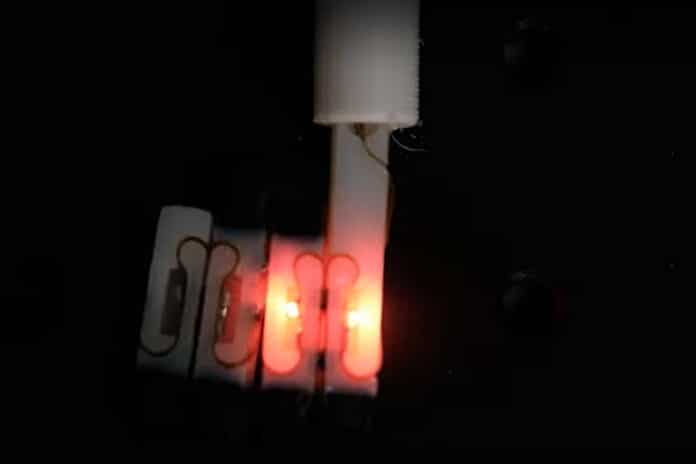Magnetic continuum soft robots can actively steer their tip under an external magnetic field, enabling them to effectively navigate complex in vivo environments and perform minimally invasive interventions. However, the geometries and functionalities of these robotic tools are limited by the inner diameter of the supporting catheter and the human body’s natural orifices and access ports.
ETH Zurich scientists have now developed a method for minimally invasive surgical instruments. Through this method, scientists can bring large objects into the body through a narrow catheter.
Scientists disassemble large devices into individual parts. They then slided them through the catheter in a row, like a string of pearls. At the end of the catheter, the parts assemble themselves into a predefined shape thanks to built-in magnets.
Scientists were primarily concerned with demonstrating the many possibilities of this new approach. They also created an endoscopic grasper using 3D printing in a relatively simple way. Moreover, they showed that the new approach makes it possible to assemble an endoscope head consisting of three parts.
For their prototypes, the scientists combined soft, elastic segments with rigid segments, into which the tiny magnets are incorporated. This design method also makes it possible for an endoscope head to perform movements with very tight radii and angles that aren’t feasible with today’s endoscopes. This increased mobility broadens the possibilities when designing devices for minimally invasive surgery on organs such as the intestine or the stomach.
Journal Reference:
- Gu H, Möckli M, Ehmke C, Kim M, Wieland M, Moser S, Bechinger C, Boehler Q, Nelson BJ: Self-folding soft-robotic chains with reconfigurable shapes and functionalities. Nature Communications, 7 March 2023, DOI: 10.1038/s41467-023-36819-z
